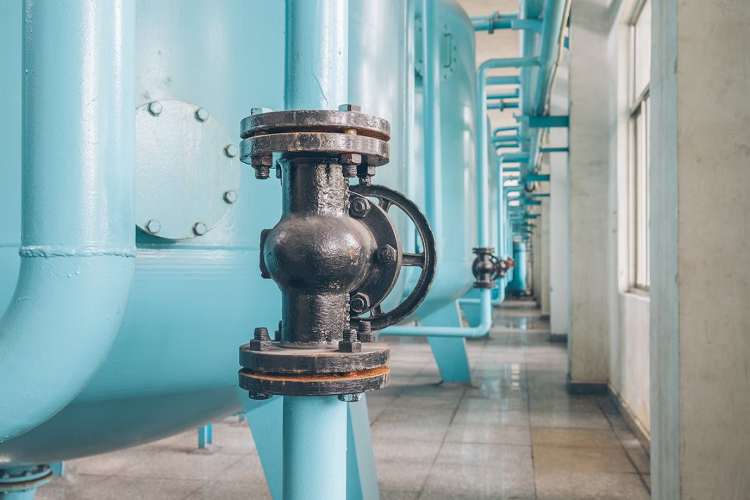Wastewater treatment makes it possible to get clean water, which is a key component of effective water management. Wastewater electronic water flow control valves which regulate the flow and pressure of the fluid are part of the wastewater pipe systems. In the treatment of wastewater, many valve types are employed; some are simple to operate while others need more skill. Also, there are differences in how much fluid or gas flow is permitted by certain valves.
Wastewater Valve

A waste water electronic water flow control valve regulates the flow of fluids or gases. The flow meter and heat gauge control how well the valve works. These pneumatic flow control evalves also only permit the flow of clean water, blocking the passage of waste and impure water. There are several wastewater valve types, each with unique characteristics and functions.
1. Check Valve
The waste water flow regulator valve divides or regulates fluid flow to control it. Due to the one-way fluid flow made possible by the check valves, the possibility of fluid backflow is minimal to nonexistent. The valve immediately shuts off and isolates the liquid flow in the event of a reversal in the flow of the liquid. To control the flow, they have a circular disc that is positioned toward the center of the valve.
2. Ball Valves
Its ball-shaped component is housed inside the valve’s seat. These valves move in a semi-turning motion to open or close. The motion of the ball inhibits the liquid’s flow, enabling a consistent seal. The ball makes it possible for the fluid to pass through the valve quickly while it is open.
The tension and flow of the liquid are significantly controlled by the ball valves. Moreover, these valves stop fluid from moving from a lower compressed air line to the higher hydraulic systems as well as leaking. The electronic water flow control valve is simple to operate and maintain because of its distinctive characteristics.
3. Globe Valves
Globe valves have two parts that are split by an internal baffle. These are sphere-shaped valves. Their principal job is to restrict the flow of liquids. There are therefore very few risks of leaking. They are intended to begin, restrict, or limit the flow of the liquid. These valves might result in a greater pressure drop than normal valves.
4. Plug Valves
The plug valves work similarly to the ball valves in that they likewise operate by half-turning the plug, which further permits or restricts the passage of the liquid. These electronic water flow control valve types are excellent choices for the commercial and industrial sectors.
They are a good match for many industries because of their streamlined design, low maintenance needs, and leak-tight service. The plug valves are also more corrosive resistant and durable. Much more fluid can flow because of these valves adaptability.
Wrap Up
Collecting wastewater generated from industrial or residential areas is the wastewater system’s primary objective. In the final outflow, the wastewater is processed, and freshwater travels via the pipe systems. To enable effective wastewater treatment, the valves should be installed properly inside the pipe system.



